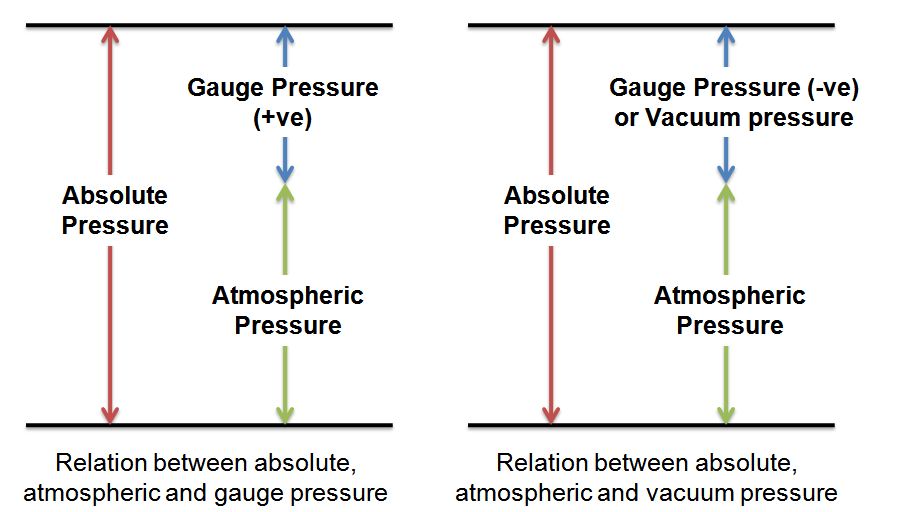Atmospheric pressure: The atmospheric air exerts a normal pressure upon all surfaces with which it is in contact and it is known as atmospheric pressure. Atmospheric pressure is also known as barometric pressure. The atmospheric pressure at sea level (above absolute zero) is called standard atmospheric pressure and its value is given as follows:
Standard atmospheric pressure = 101.3 kN/m2 or kPa (1 kN/m2 = 1 kPa)
= 10.3 m of water
= 760 mm of Hg
Atmospheric pressure = Absolute pressure - Gauge pressure
Gauge Pressure: The pressure measured with the help of a pressure gauge is known as gauge pressure, in which atmospheric pressure is taken as datum. All the pressure gauges record the difference between the actual pressure and the atmospheric pressure. The actual pressure is known as absolute pressure. Mathematically
Absolute pressure= Atmospheric pressure + Gauge pressure (Positive)
Vacuum pressure: For pressures below atmospheric, the gauge pressure will be negative. This negative gauge pressure is known as vacuum pressure. Therefore
Absolute pressure = Atmospheric pressure - Negative gauge pressure or vacuum pressure
203) The difference between the atmospheric pressure and the absolute pressure is known as vacuum in a condenser.
Answer is:
Agree
Explanation:

Related Steam Boilers and Engines MCQ with Answers
Answer is:
0.067 bar
Answer is:
efficiency of the chimney
Answer is: